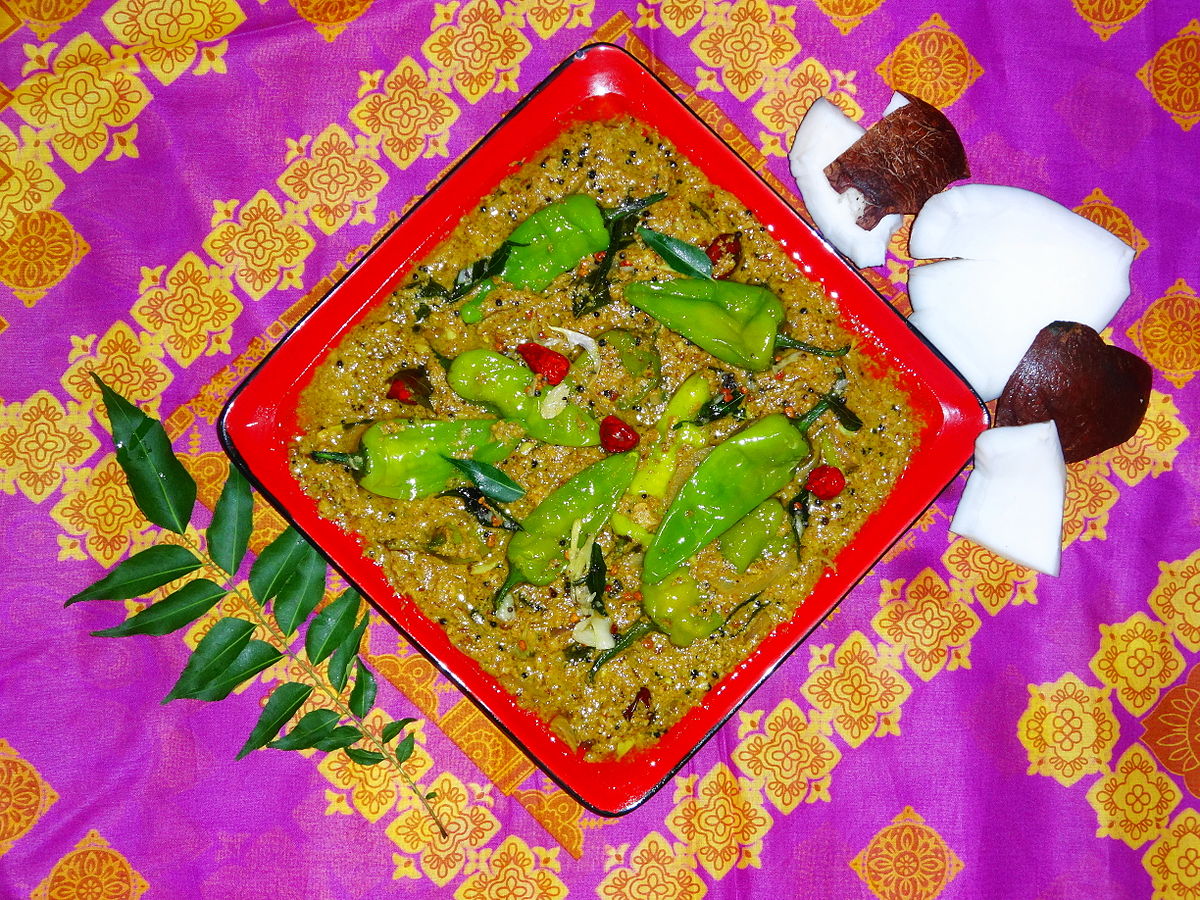Skimming across a menu at one of Los Angeles’s critically acclaimed ethnic Indian restaurants, I didn’t bother going past the first few entries. This was possibly my thirtieth visit to an Indian restaurant in the city over the years and—as expected—it was as generic as an Indian menu could be.
I had envisioned the layout before I even opened it: the “beverage” section with the omnipresent chai tea and lassi, the food part right after—samosa with various fillings, an assortment of chaats and other street foods headlining the velvet covered menu. Next, a “tandoor” section with an assortment of meats, vegetables and seafood in chargrilled kebab style. Random soup preparations—garam masala tomato consommé anyone? Or dal soup? The “salad” section follows with a chicken tikka Caesar salad marked “local special.” An a-la-carte entree section devoted to various curries such as makhani, tikka masala, vindaloo and saag. “Choose your protein” with any curry, served with a choice of kachumber (mixed vegetable salad), chutney, naan bread/rice side, eventually ending on a sweet note with three or four common dessert selections (gulab jamuns, kulfi and rasmalai).
If I were to breakdown the Indian food map, it would be impossible to fit it all in one book, let alone one article. Indian restaurants in parts of the world other than India have generalized its cuisine to a point that it is concentrated to a few dishes, which apparently represent India but are nowhere close to the real deal. Indian cuisine is so vast and so diverse that it is almost hyper-locally differentiated rather than just by regions or even cities. Over decades the Indian diaspora has changed drastically, and even in India, our cuisines have metamorphosed into a mere shadow of what traditional, authentic Indian cooking is all about.
Indian restaurants in parts of the world other than India … are nowhere close to the real deal.
Our cuisine has seen a significant change from ancient Indian cooking, almost wiping out decades of originality due to colonization, ingredient adaptations, and as of today, new world convenience. If Indian restaurants abroad are the barometer, then you would be forgiven for thinking Indian food is all about the heat index and that curry, mostly dominated by a tomato base, defines our main courses.
It certainly wasn’t always this way. And it’s a lot more complicated than boiling everything down to a curry or a few ingredients. We did not have tomatoes, potatoes and chilies in ancient India and black pepper was the only spice that provided heat. These ingredients were grown in abundance much later and were largely European and American produce. Food historian and chronicler Professor Kurush F. Dalal explains how chilies were introduced to India during the 16th Century, and within 100 years, they had become the main source of heat in our food, with other spices almost losing their relevance. Chilies are easy to grow (any condition, any soil) and also way cheaper. Every region also had its own souring agent such as kokum, limes, tamarind and mango. These were soon easily substituted with tomatoes, and the preparations quickly adapted to the bold and piquant flavors of this juicy fruit.
Another acclaimed food historian, Dr. Mohsina Mukadam, who is also the Head of Department of History at Ramnarain Ruia College, Mumbai, further reconciled these facts by pointing out how new curries were born using this fruit as a base, but it took a while to become established since Hindus across the country did not accept tomatoes, this fleshy fruit with its red color, so easily (it resembled meat texturally and in color). It was only when an epidemic of viral fever hit our shores and we saw changes in health policies that tomatoes were suddenly heralded as a medicinal source and the entire nation adopted this ubiquitous ingredient.

The British were certainly not going to be cooking in the army kitchens; it was beneath them and left to us. Our cooks were experts in the eyes of the British, and our food as complex in technique to conjure as the French. Coming from all over India, the cooks came armed with expertise from their own lands, bringing all that knowledge under one roof. Their cooking used the ingredients at hand, wielding spices and marrying ingredients that created the menus of the 1900s. The dishes were a subtle mix of French and European fare with some interesting Indian preparations such as lentils (used in dals, rasams, sambhars) and curries (dak bungalow mutton curry and railway mutton curry). While Indian eating customs were family style, the British tweaked our dishes to represent a more orderly meal style, where lentils were served as the soup course (rasam’s British form was the mulligatawny Soup) and the curries with their assorted sides became entrees.
When the British left India in the late 1940s they were already hooked on our flavors. They took with them the little knowledge they had about Indian food, quite conveniently converting it into what stands today as the global average of Indian cuisine and giving rise to “curry houses,” which rule the Indian ethnic concepts all over Europe.
Around the same time, Kundan Lal Gujral, an enterprising restaurateur (hailed as the father of tandoori cuisine) popularized tandoori and mughlai dishes. His legendary restaurant in Delhi by the name of Moti Mahal was filled with statesmen and dignitaries tucking in his signature and most famed creation, murgh makhani (butter chicken). Butter chicken is a silken tomato curry, riddled with butter and cream, layered with sweet and hot, fragrant spices. It is further fused with the chargrilled, smoky chicken tikka, making it a deliciously complex dish.
Our cuisines have metamorphosed into a mere shadow of what traditional, authentic Indian cooking is all about.
Murgh makhani today has many versions due to its popularity in India, but the British were mildly influenced by its contents and went on to create the chicken tikka masala in the 1960s, and that went on to become one of the most popular dishes in any Indian restaurant abroad. Today it’s also considered a true British national dish.
What exactly is chicken tikka masala? Many interpretations exist and there are possibly a few dozen combinations. The British had a penchant for the North Indian tandoori chicken, a dish popularized by Moti Mahal. They came up with a simplified Indian curry of sorts with uncharted reports suggesting that Campbell’s soup was used to ‘wet’ the dry grilled tandoori chicken, along with a host of basic Indian spices.
They tried to replicate butter chicken, but the recipe unfortunately underwent so many makeovers that it turned out to be a far cry from the traditional preparation. A version that was intensely spiced and less balanced went on to become chicken tikka masala. Monish Gujral, the grandson of Kundan Lal Gujral, agreed that “the relevance and popularity of tandoori dishes, including the famed murgh makhani, has traveled across seas and molded the style of Indian menus all over. There are several versions which exist today but they almost take root from my grandfather’s restaurant.”
The simple murgh makhani was further bastardized with unnecessary additions. The bright red color derived from an ancient root ratanjyot (alkanna tinctoria) prevalent in curries and tandoor preparations was used to entice the diner in a visual feast. However, with the European Union banning the use of this ingredient due to the presence of hazardous chemicals (hepatotoxic pyrrolizidine alkaloids—PAs—which cause liver damage), it gave rise to artificial coloring in Indian food preparations such as gravies and tikkas. Ideally, if one was to make a traditional chicken tikka, the recipe calls for degghi mirch—a bright red chili powder which renders a pale yellowish-orange tinge to the dish after being mixed with various elements of the marinade.
There is a strong movement in India to revisit lost recipes of India and a small increase in focus on traditional Indian food globally. While we may not be able to reverse the use of prevailing ingredients, we are definitely revisiting ancient grains, cooking methods and traditional techniques to revive and retain our culture through our cuisine. Unfortunately, abroad, the curry houses in the UK, Los Angeles, and the various Indian establishments in the west are still stuck in a time-warp of colonized India.
There is a strong movement in India to revisit lost recipes of India.
In Indian food preparations abroad, spices are weak and usually one-dimensional. Cooking methods involve quick processed ingredients as short-cuts, thwarting any attempt to bring in the fine layers of flavors in real Indian cooking. The use of canned tomatoes and various dairy substitutes (coconut milk!) in curries, along with artificial coloring to amp up the visual details is a staple. The dumbing down of heat by adding spices atop instead of rendering it into the fat (to allow adjustments in levels of heat on a scale of 0-10) is characterless. The lack of caring about all of these intricacies has created a face of Indian food which is completely misplaced and misappropriated towards what the cuisine really stands for.
Mohsina also points out “the British have narrowed down every single sauce dish from India into curry,” but the world doesn’t know we have a wide variety of sauce-based dishes such as scented salans, spicy phaals, rich and nutty qormas, caramelized do piazas (onions cooked two ways) and sublime kadhi amongst many other preparations.
It’s about time modern or “progressive” Indian food and “curry” concepts take a backseat, and instead, traditional Indian cooking takes center stage—through education and correct representation of the food.
Contributor
Nikhil Merchant is an Indian-born, Mumbai resident who writes about food, drink and travel for luxury and lifestyle publications to business magazines. He describes himself as a gourmand-turned-gastronome.



